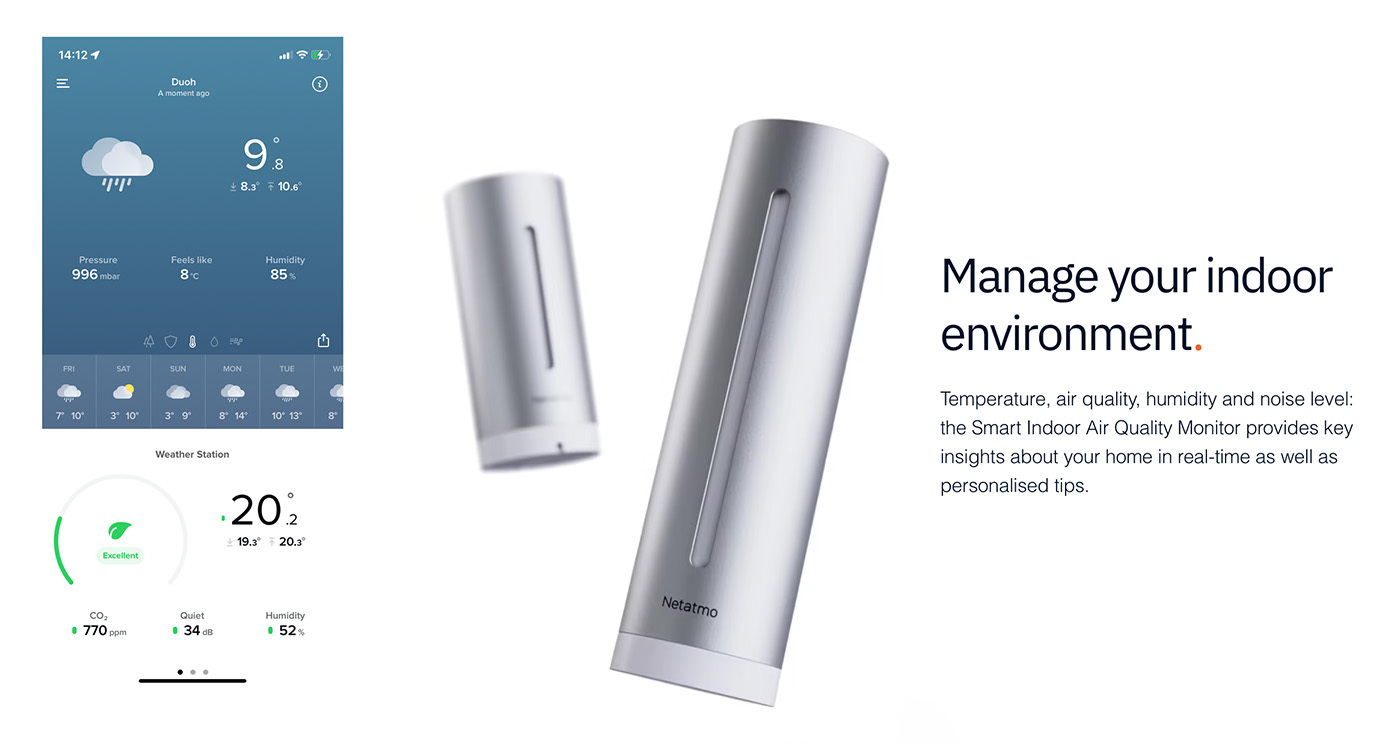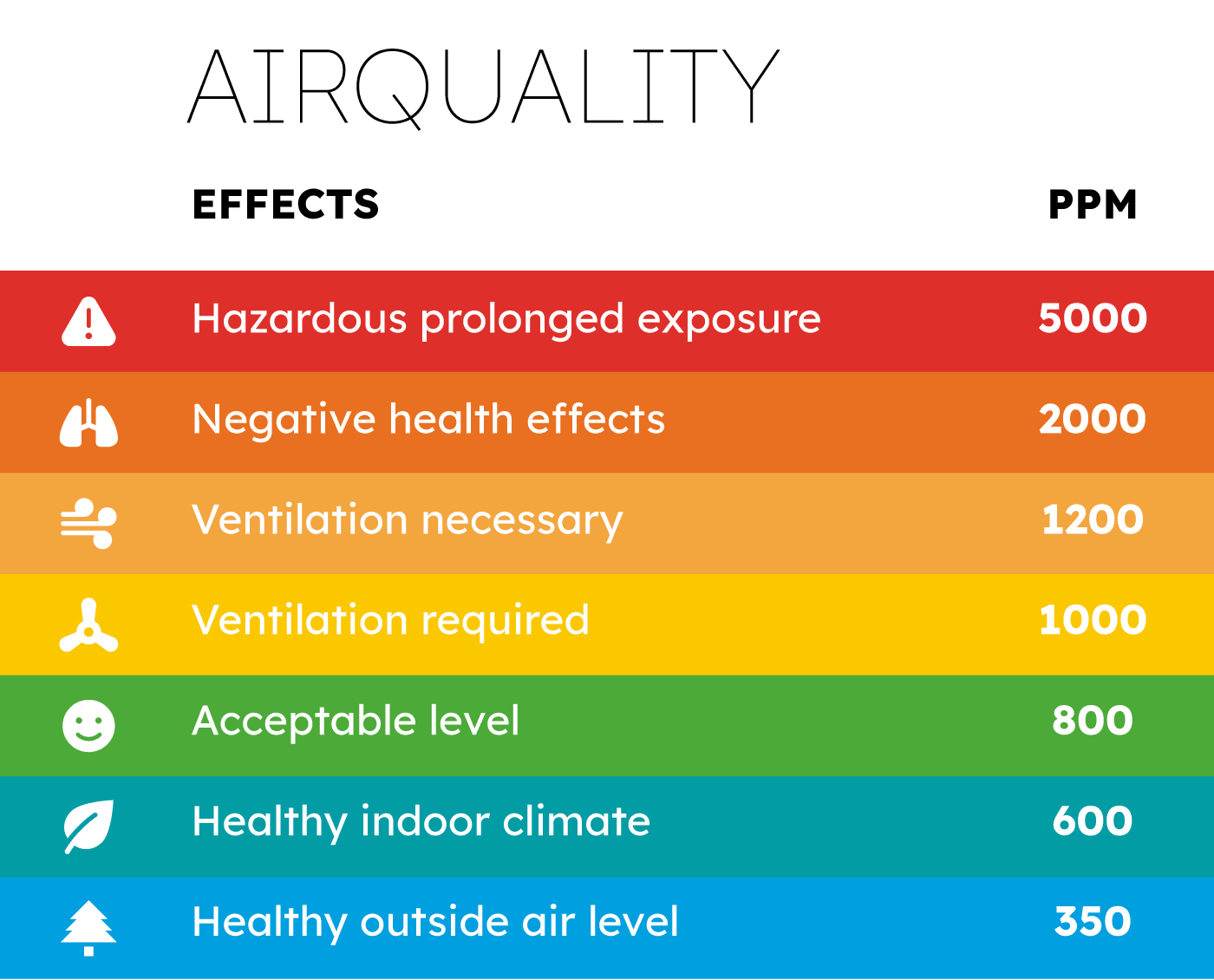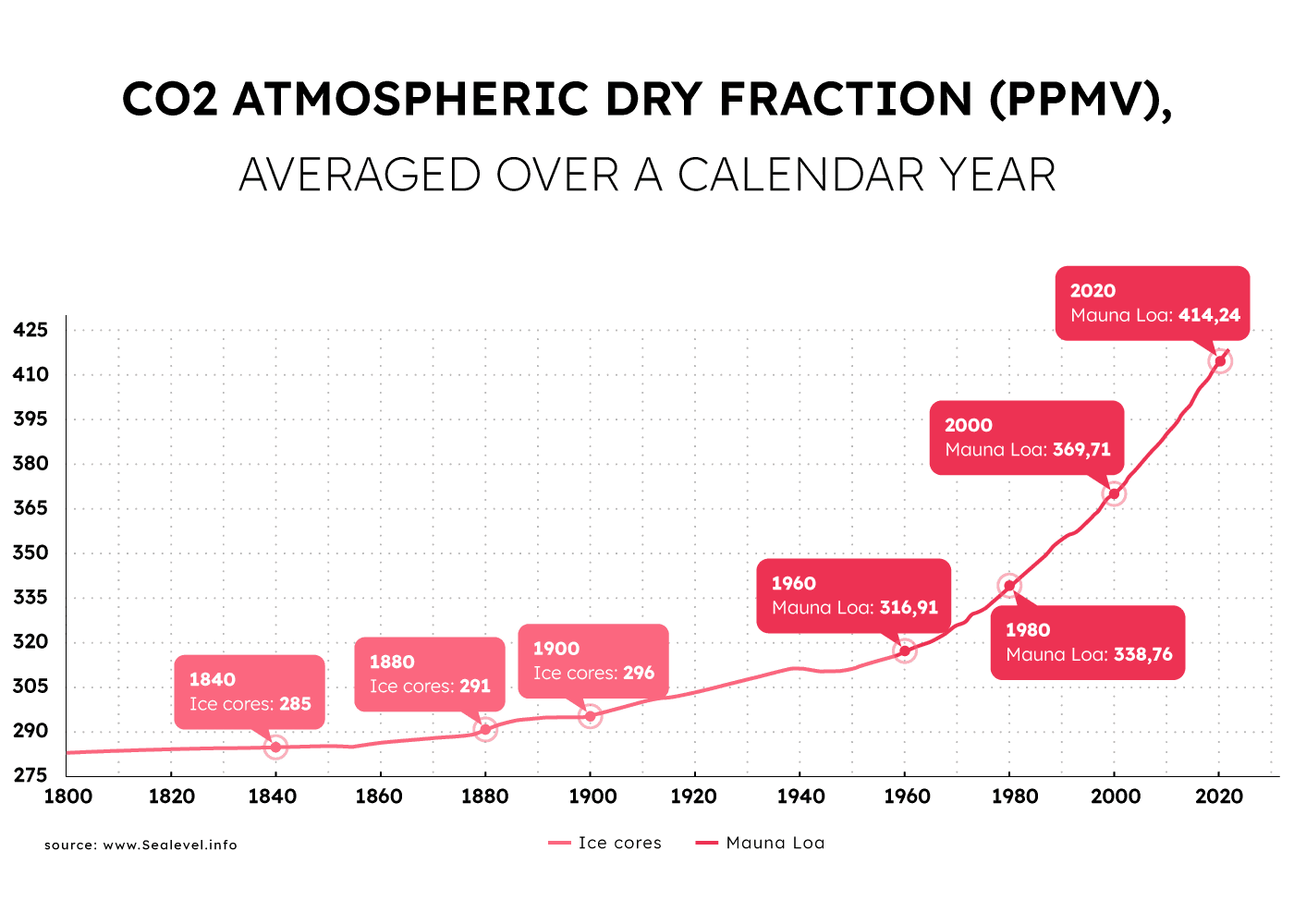Home & Living Inspirational interior and exterior design seamlessly blend aesthetics and functionality. Discoveries that evoke emotions and make you dream.
Air quality CO2 PPM's
The underestimated invisible item that is so important to our overal heath. Good ventilation has been undervalued for years. Honestly, before the pandemic, the concepts of CO2 and PPM were a mystery to me. I didn't pay much attention, except for the occasional practice of ventilating rooms by opening windows for about 20 minutes each day, albeit without a clear understanding of CO2.
What Is It?
CO2 stands for carbon dioxide and levels are measured in PPM (Parts Per Million). Before I started measuring I had no idea that air quality in closed spaces deteriorates very quickly because contaminated air is barely noticeable. The tighter your house is sealed, the quicker the air quality tends to decline. It could be argued that an older, more drafty house benefits from natural ventilation. I use to live in such a house, very costly to heat in winter and overheated in summer.
How Do You Know?
The initial step is acknowledging the presence of CO2 in our living spaces. For example by using measuring equipment such as the Netatmo Healthy Home Coach or the Smart Home Weather Station, it is possible to map CO2 and take action to prevent high CO2 concentrations. The World Health Organization (WHO) states that a room should be ventilated at least twice a day, preferably in the morning and evening. That's what I attempted, but frankly, it falls short. Why? Well, it hinges on the wind intensity and the speed at which fresh air circulates. In high winds, you can sustain a satisfactory level for longer, but in calm conditions, the space swiftly reverts to an undesirable level. 'Quickly' here refers to a matter of hours with two persons occupying the room, contingent on how well-sealed your house is. Perhaps you've observed a distinct odor in certain houses or rooms, that's the result of stagnant air. I particularly experienced this in my bedroom after a night's sleep, I admit, feeling somewhat embarrassed. I'm pretty sure that ppm levels reached 2000 or more.

The Smart Home Weather Station also works with Apple Home.
Is CO2 Dangerous?
Yes and no, CO2 in itself is harmless or, as scientists say, inert, non-flammable and non-toxic. Yet, an elevated concentration of CO2 within a room disrupts the absorption of oxygen in our bodies, and this occurrence is undesirable. As this displacement happens, the body transitions to reduced energy consumption throughout the day, resulting in specific issues like fatigue, headaches, diminished concentration and worsening of allergies (hay fever, food allergy, etc.). In my case you can also add a stuffy nose to the previous list. Another indicator of elevated CO2 levels often manifest itself as sleep issues, with notable symptoms such as waking up feeling restless, experiencing poor sleep quality, fatigue, and headaches. Thanks to the installation of a ventilation system, I can confidently attest that the overall living comfort has significantly improved. I no longer endure frequent headaches, a fatigue feeling in the afternoon or a stuffy nose, and, best of all, my sleep pattern has seen a remarkable improvement. Details about the system, the reasons behind its selection, and the steps I took will be addressed in a subsequent article.
The governmental department (FOD Public Health, Food Chain Safety and Environment) in Belgium says if the CO2 concentration is lower than 900 ppm (or 500 ppm above the outside concentration), we consider the room to be well ventilated.)
CO2 Meter Card
The CO2 level allows you to map the degree of ventilation. On the CO2 meter card below you will gain a better insight into the PPM values and what these values mean.

Is It *the* CO2?
Yes it is the same CO2 that scientists are worried about. Annually, human activities release more carbon dioxide into the atmosphere than natural processes can absorb, leading to a progressive increase in atmospheric carbon dioxide levels. The increase in carbon dioxide (CO2) levels in the atmosphere is primarily attributed to human activities, particularly the burning of fossil fuels (coal, oil, and natural gas) and deforestation. These activities release large amounts of CO2, a greenhouse gas, into the atmosphere.
As an illustration, when I was born, the atmospheric CO2 concentration stood at 324 ppm. At the start of this year, a highly reliable measuring station in Hawaii recorded 415 ppm. This station has diligently measured CO2 concentrations since 1957. In the span of just my lifetime, there has been an increase of 91 ppm. Examining the data reveals a substantial spike since the industrial era (pre-1800s), with estimates placing it at around 280 parts per million (PPM) during that period. We know this thanks to ice core data. Ice cores extracted from glaciers and polar ice caps preserve air bubbles that contain samples of the atmosphere from different periods.

You can read more about the 'Mauna Loa Observatory' in Hawaii at 'ask NASA climate'. Next up I'll talk about another invisible home intruder 'air pollution' and what you can do about it.

